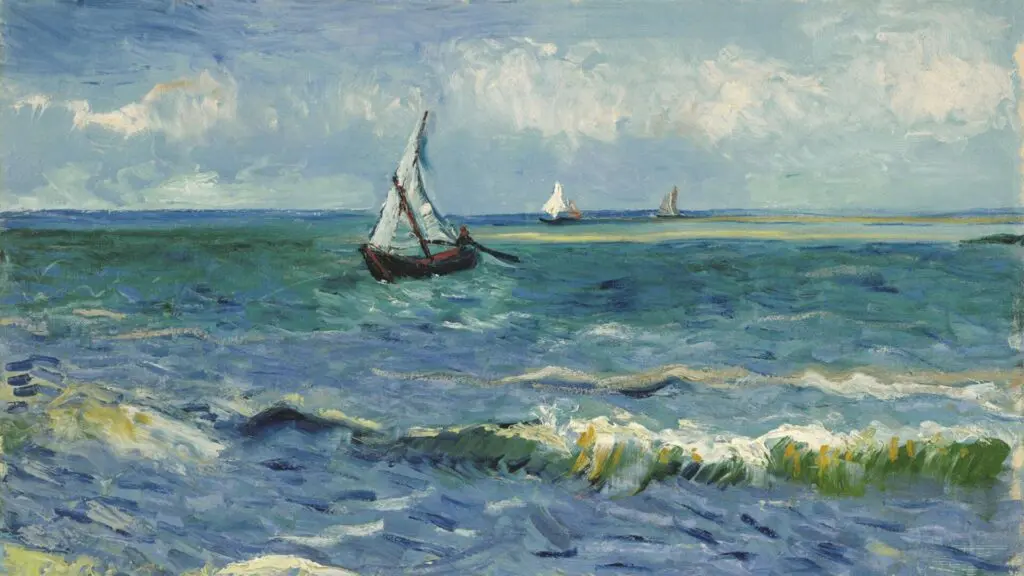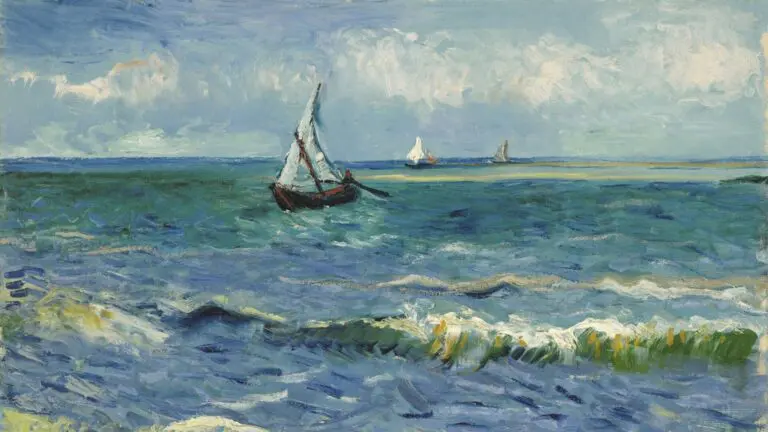Seascape at Saintes-Maries
Seascape at Saintes-Maries captures the peaceful yet lively waves of the Mediterranean Sea with small fishing boats floating on the water. With deep blues and greens contrasting against the crisp white of the sails, Van Gogh’s brushwork mirrors the rhythmic movement of the waves, making the sea almost feel alive. It’s a beautiful depiction of nature’s simplicity, filled with a sense of adventure and serenity.
1888
About the Artwork
In 1888, Van Gogh visited the seaside town of Saintes-Maries-de-la-Mer in the south of France, hoping to paint the sea and feel the warmth of the coastal light. Inspired by the fishing boats and vast ocean, he created Seascape at Saintes-Maries right on the beach. Van Gogh found joy and freedom in the wide-open space, seeing it as a refreshing escape from his usual subjects.
Did You Know
Seascape at Saintes-Maries is unique for its vivid depiction of the Mediterranean’s colors and textures. Van Gogh’s brushstrokes mimic the waves’ movement, making the water feel almost tactile. His use of contrasting colors and dynamic lines conveys the sea’s energy, while the small boats add a sense of human presence. This work shows his remarkable ability to capture both the peace and power of nature in a single scene.
Van Gogh’s fascination with Japanese art is subtly present here—the simplicity of the boats and waves reflects the Japanese influence he admired, bringing a unique calmness to the composition.
Van Gogh created some of his best-known works during his final years in the asylum at Saint-Paul-de-Mausole in Saint-Rémy-de-Provence, including The Starry Night. Despite his struggles, he was incredibly prolific, producing roughly 150 paintings in a year.










